By Falco
03 Jun 2024
There was quite a dispersion of economic data surprises around the world through May. Europe was the positive standout, with evidence of ongoing improvement in economic growth. Japan’s economic data deteriorated sharply at least until right at the end of the month when retail sales beat expectations. However, generally through the month Japan saw disappointing growth data. The US economy lost some momentum too. The economy is still growing at a relatively good clip, but it appears that consumers are feeling the pinch from high inflation taking away spending power.
Chart 1: Dispersion of economic surprises – Europe leads
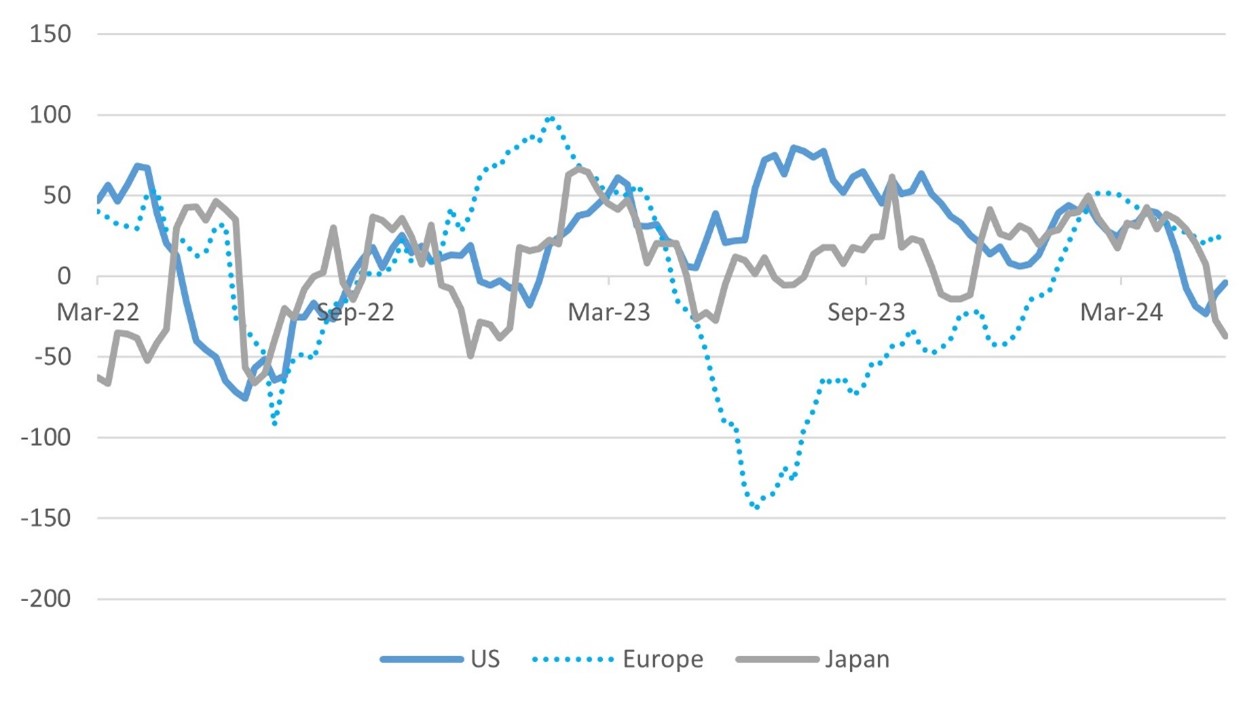
Inflation data has remained irritatingly at or around expectations (Chart 2). Central bankers would like to have it lower. However, to date, inflation has struggled to surprise to the downside. In comprehensive terms, inflation remains around 100bps higher than they would prefer. In the US, they have had some evidence of consumers baulking at price increases and either stopping buying or trading down – buying the same product but a cheaper version. Discount store companies have seen more robust sales growth in the US – although an interesting dynamic is that the Chinese e-commerce platform has taken a 17% market share in the US – in essence, Chinese competition is driving some inflation out of the economy.
Chart 2: Neutral Global Inflation surprises to the irritation of central bankers
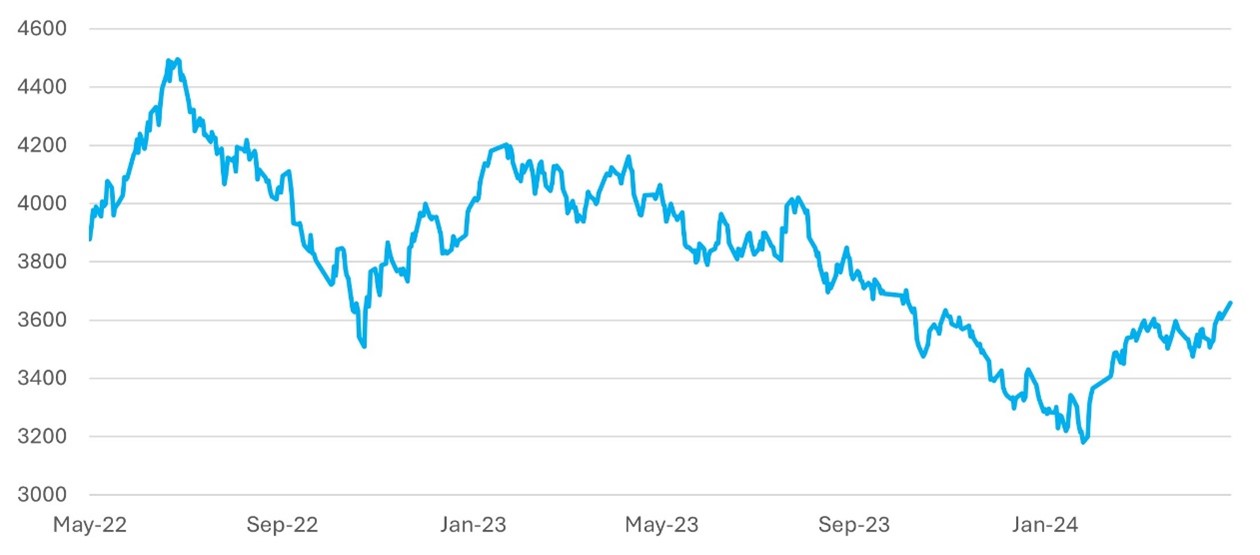
Source: Bloomberg
The European economy appears to be gaining some momentum. Recent better than expected industrial confidence data has led to some economists revising up their second quarter annualised GDP growth forecasts to around the 2% mark. There remains still some further upside if only the consumer could show the confidence of their compatriots in the United States. As JPMorgan economists put it quite recently “despite a 20% surge in incomes and 18% jump in wealth since the end of 2019, Euro area households raised their saving rate 2.5%-pts. By comparison, US households have responded to their 25% bounce in incomes and 33% jump in wealth by reducing their saving rate 3.3%-pts”. With the ECB set to cut rates very soon hopefully consumer confidence will respond.
Chart 3: US quarterly employment cost index (% change quarterly growth)
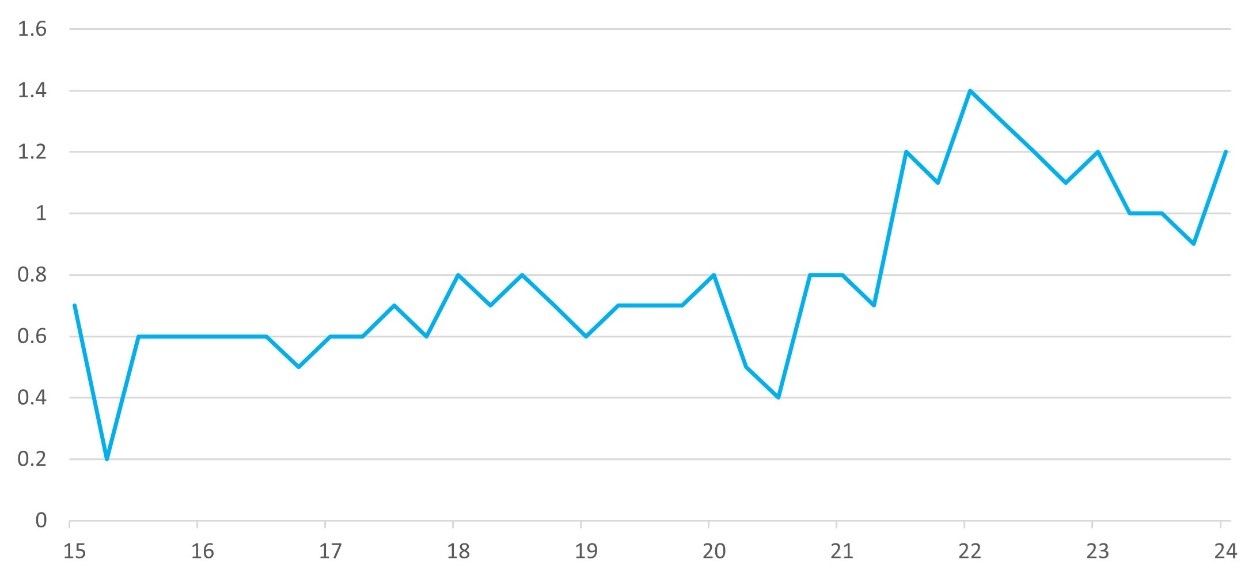
Source: JPMorgan
Understandably, investors still worry that the US economy may have a soft underbelly that could lead to weakness and a drop-off in inflation. Much of the recent growth has been directly attributable to government spending. In the labour market, close to 54% of jobs are created by analysts, which is linked to the growth of public sector spending.
Chart 4: Chinese retail sales growth slips back (year-on-year %)
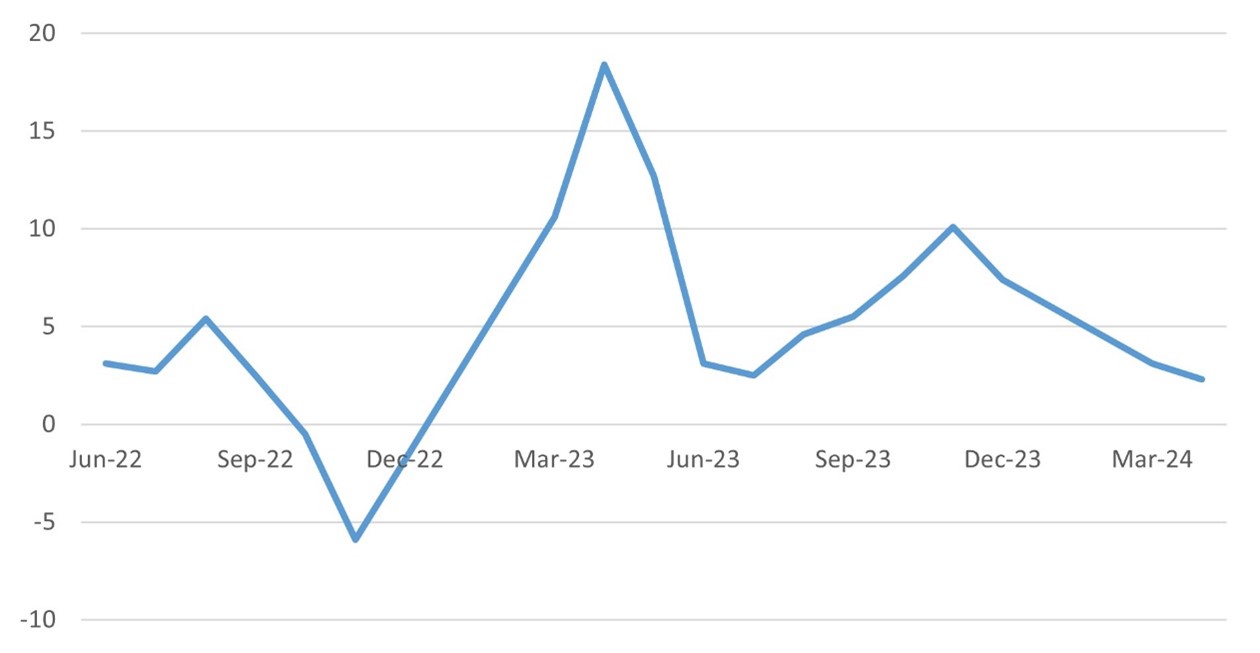
Source: Bloomberg
China has in the past month disappointed on economic data releases with the economy seeming to stall after recent better news. Economists are now looking to major government policy meetings coming up in July for another wave of support for the economy. The major challenge appears to be household confidence. Retail sales growth has fallen back from 10% year-on-year growth in November 2023 to just 2.3% in April.
Markets
Equities
Equity markets were very healthy in May, nearly doubling the year-to-date returns in many cases. European equity markets managed to edge out the US. Europe benefitted from greater investors' convictions that the ECB would be one of the first major central banks to cut interest rates. The good US equity market return was helped by the strong performance of tech stocks.
Asian equity markets were mixed in May, not helped by some stuttering in the performance of Japanese equities. The Japanese economy showed some signs of slowing, and the Yen remained under downward pressure. China's equity market also went quiet, consolidating after some strong gains in previous months. The Indian equity market was also quiet ahead of election results due in the early days of June.
The lack of positive dynamics did not help emerging markets in the leading markets. The exceptions were Taiwan and Korea, which performed strongly, thanks to the tech stocks. Brazil continues to fall away as the high interest rates burden the economy and equity market.
Table 1: Equity Market returns for May
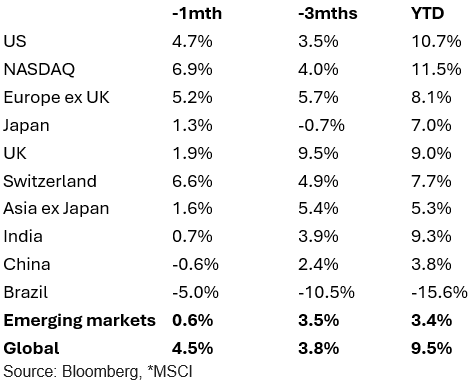
Equity sector performance
After last month's profit taking, the tech sector had another good performance in May. Nvidia reported another excellent quarter's performance, leading to a further sharp rise in share price. The energy sector went into reverse as the oil price slipped back, unwinding a quarter of recent gains. Consumer discretionary stocks are hurting, with consumers cutting back on large purchases due to the damage to their spending power from inflation.
Table 2: Global equity sector returns for May
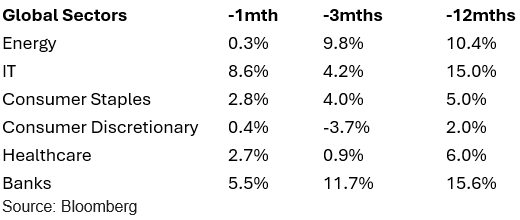
Bond markets
Bond market returns were positive, although the month witnessed a wide range of trading for the US 10-year bond yield. Signalling from the Fed has been mixed, with both the minutes of the last meeting and ongoing commentary suggesting that rate cuts may be slow to come through. Bond auctions towards the end of the month showed a drop in investor appetite for US Treasuries, and hence, yields pressed higher. The story in the eurozone looks better. The ECB is likely to cut its policy rate in the first week of June.
Credit markets maintained their relatively low spreads against government bonds. While many an investor remains concerned that high-yield bonds must suffer a rise in default to date there has been little sign to date of any marked pickup in stress.
Table 3: Bond market total returns In May

FX and Precious metals
Some weaker than expected US economic data pushed the dollar lower over month, reversing some of the recent gains. The weakness was despite further noise from Fed board members who argued for higher-for -longer interest rates.
Dollar weakness helped precious metals, with gold maintaining its recent outsize gains and silver returning 15.6% on the month to add a further leg to the rally. Bitcoin was up 13%, as Ethereum was another cryptocurrency to receive approval from the S.E.C for an ETF.
The Yen remained under pressure as macro growth data weakened. Sterling strengthened somewhat after announcing a general election slated for July 4th.
Table 4: Monthly performance of precious metals and currencies for May
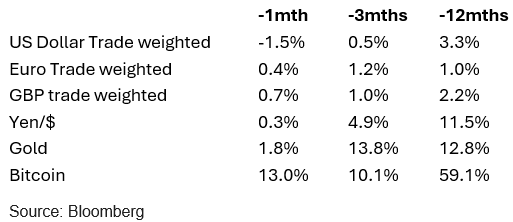
Gary Dugan - Investment Committee Member
Bill O'Neill - Non-Executive Director & Investor Committee Chairman
3rd June 2024
The information contained within is for educational and informational purposes ONLY. It is not intended nor should it be considered an invitation or inducement to buy or sell a security or securities noted within nor should it be viewed as a communication intended to persuade or incite you to buy or sell security or securities noted within. Any commentary provided is the opinion of the author and should not be considered a personalised recommendation. The information contained within should not be a person's sole basis for making an investment decision. Please contact your financial professional at Falco Private Wealth before making an investment decision. Falco Private Wealth are Authorised and Regulated by the Financial Conduct Authority. Registered in England: 11073543 at Millhouse, 32-38 East Street, Rochford, Essex SS4 1DB
